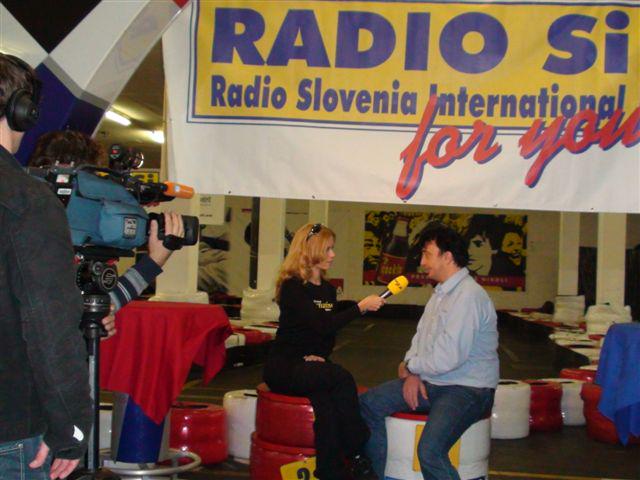
Maribor, Slovenia’s second largest city, is used to being overshadowed by the capital. Since the 1980s, however, it has been the home of an unusual media experiment that has helped to make the town well-known far beyond the country’s borders.
Even in Communist times, Maribor served as an entry point for foreign visitors entering Yugoslavia from the West. Many ultimately headed to the beaches of the Adriatic, but by the 1980s, spas and other resorts in eastern Slovenia had emerged as tourist destination in their own right. In 1985, the management of Radio Maribor decided to cater to these audiences by launching a strand of foreign-language programming known as MM2.
The new service’s mix of rock and pop, interspersed with news, weather, and various announcements, mostly in German, was an immediate hit. It attracted young listeners in eastern Slovenia and northern Croatia, but it left its strongest mark in Austria. There, the public broadcaster ORF still enjoyed an official radio monopoly, and many listeners were hungry for a fresh alternative to Ö3, the country’s only pop music service. Soon, MM2 began to attract eager advertisers from throughout southeastern Austria – companies that were eager to reach a young audience but not big enough to buy ad time on national radio.
According to Edvard Pukšič, then the editor-in-chief of MM2, ORF set out to crush the Slovenian upstart almost immediately. It began broadcasting Ö3 on a new frequency adjacent to the one used by Radio Maribor and MM2, making the broadcasters difficult to receive in Austria – and even parts of Slovenia. As a result of this move, Radio Maribor was forced to move to a different wavelength in order to regain its original coverage area.
Meanwhile, MM2’s youthful sound had become an annoyance to Radio Maribor’s older, more traditional listeners. Thanks to the advertising revenue from Austria, the station was able to launch on a separate frequency on June 1987, becoming a standalone, all-day service.
That’s when MM2 emerged as a truly international station. Its broadcasts in German, English, and French were fronted by an on-air staff from around Europe. As Pukšič recalls, some of theme were Slovenians who had spent years living abroad, while others were foreigners whose personal circumstances had brought them to Maribor. The station even attracted guest DJs from other European radio stations. And, Pukšič points out, MM2 became one of the first general-audience stations anywhere with regularly scheduled newscasts in Esperanto.
MM2 had established itself as a rarity in the world of radio: It was a commercial service originating from a Communist country that relied in large part on its popularity in a Western nation that was underserved by its monopoly broadcaster. With its international focus, and its wide playlist that included even challenging subgenres of rock, it was also unlike most conventional commercial operations.
ORF, meanwhile, continued to exert pressures on the Yugoslav authorities. According to Pukšič, the amount of revue MM2 could earn from Austrian advertisers was limited by decree and the power of its transmitter was reduced. Because only a small percentage of the Slovenian license fee went to MM2, the station became starved of resources, and had to shut down for several months in 1988. It was an almost fatal blow.
Ultimately, MM2 was able to obtain more funding, and the station soon returned to air, much to the relief of its loyal audience. Even Slovenia’s independence in 1991 didn’t change things much for MM2. A few years later, however, a new media policy in Austria ended up having long-term consequences for the broadcaster. In the 1990s, Ö3 began to freshen up its approach. Even more worrying for MM2, the decade saw a deregulation of broadcasting in Austria and the emergence of new commercial stations, which slowly ended MM2s’ unique appeal to German-speaking listeners.
After a series of name changes – first becoming Radio Maribor International and then Slovenian Tourist Radio -, the station finally emerged as Radio Slovenia International (Radio SI) in 2001. No longer targeting the Austrian market, Radio SI now airs from transmitters across Slovenia and is aimed primarily at foreign ex-pats living in Slovenia and a younger generation of Slovenians at ease with foreign languages. The station has added Slovenian to its linguistic mix, but it remains a proudly multilingual operation – a radio voice bringing a cosmopolitan spirit to its audiences, just as MM2 did more than three decades ago.

































































